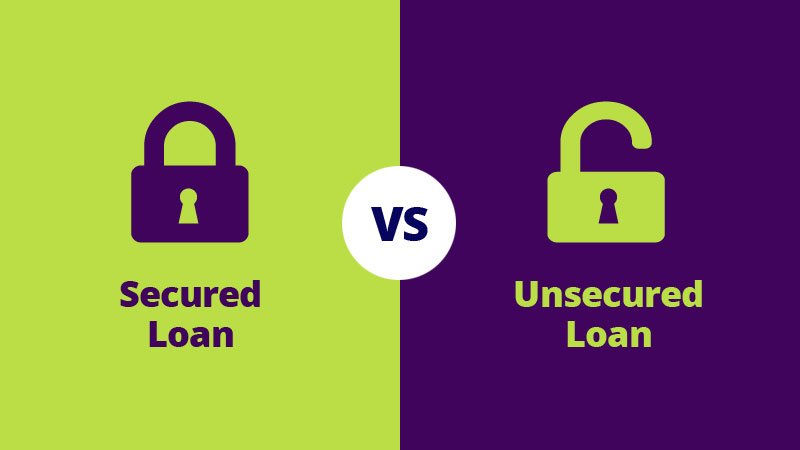Introduction to Moving Loans and Personal Loans
Understanding the different types of financial assistance available for moving is crucial to ensuring a successful relocation. Two common options are moving loans and personal loans. Each type of financing has distinct features that cater to various needs and circumstances. Moving loans are specifically designed to cover expenses associated with relocating, including hiring moving services, purchasing packing materials, and securing temporary housing. These loans typically offer tailored terms and conditions, making them an attractive option for those preparing for a move.
On the other hand, personal loans serve a broader purpose. They can be utilized for a multitude of expenses, such as consolidating debt, funding home improvements, or paying for a move. Personal loans often come with flexible amounts and repayment terms, allowing borrowers to choose an option that aligns with their financial situation. However, since they are not specifically related to moving expenses, it is important for individuals to delineate how they plan to allocate the funds when applying for this type of loan.
When deciding between moving loans and personal loans, it is essential to assess factors such as interest rates, repayment terms, and eligibility criteria. Moving loans may offer lower interest rates due to their specific purpose, while personal loans may provide more flexibility. In the context of a move, choosing the right loan can significantly impact not only the financial burden of relocation but also the overall experience. The decision ultimately depends on individual circumstances, including the total cost of the move and the applicant’s credit history. Armed with a clear understanding of both loan types, individuals can make informed decisions to facilitate a smoother transition during their move.
Understanding Moving Loans
Moving loans are specialized financial products designed to assist individuals in covering the costs associated with relocating. Unlike traditional personal loans, which can be used for a broad range of expenses, moving loans are tailored specifically for relocation needs, such as moving services, transportation, and even temporary housing costs. These loans can prove invaluable, especially for those who might not have sufficient savings set aside for such an expense, ensuring that they can manage the transition smoothly.
Common scenarios where moving loans may be applicable include job relocations, where individuals are required to move for employment reasons. For instance, an employee receiving a job offer in a different city might opt for a moving loan to cover the costs of hiring a moving company or renting a moving truck. Additionally, people moving for family reasons, such as relocating to be closer to relatives or needing to downsize, can also benefit from this type of financing.
Typically, moving loans come with specific loan terms, including repayment periods that can range from a few months to several years. Interest rates may vary based on credit scores and the lender’s policies. It is essential for borrowers to review the terms carefully, ensuring they are aware of any fees or conditions attached to the loan. Potential borrowers may also need to meet eligibility criteria, which may include having stable income, a good credit history, and proof of intent to relocate.
For instance, a recent graduate offered a job in a different state might apply for a moving loan to facilitate their transition. If approved, the loan would cover their moving costs and provide the necessary funds to get settled in their new location. Moving loans, therefore, serve as a practical solution for those facing financial pressures during a period that can often be both exciting and stressful.
Examining Personal Loans
Personal loans are unsecured loans that individuals can obtain for a variety of purposes, including covering moving costs. They are characterized by their flexibility and accessibility, often allowing borrowers to use the funds for anything from consolidating debt to financing home improvements. One of the primary advantages of personal loans is that they do not require collateral, which makes them an appealing option for those who do not want to risk their property to secure financing.
To qualify for a personal loan, borrowers typically need to have a good credit score, a stable source of income, and a low debt-to-income ratio. Lenders may also assess factors such as employment history and overall financial health. The maximum amount that lenders are willing to offer varies; however, personal loans generally range from a few thousand dollars to upwards of $50,000. When considering moving loans, potential borrowers should evaluate their specific needs, as personal loans can be a suitable option for covering a range of moving expenses, including hiring a moving company, packing materials, and temporary storage fees.
Despite their benefits, personal loans also have drawbacks. They often come with higher interest rates compared to secured loans, and the total repayment amount may increase substantially based on the loan term and interest rates. Thus, it is essential for borrowers to carefully evaluate the terms and conditions before applying. Furthermore, responsible borrowing entails understanding one’s financial limits and ensuring that monthly repayments will be manageable. In conclusion, personal loans can be a viable solution for individuals seeking to finance their move, provided they meet the qualifying requirements and use the funds responsibly.
The Pros and Cons of Moving Loans
When considering financing options for relocating, moving loans present a specialized solution tailored to cover moving-related expenses. One of the primary advantages of moving loans is their specific design to facilitate the costs associated with relocation, which can include hiring moving services, purchasing packing supplies, and securing temporary housing. This focused application allows borrowers to allocate funds precisely where they are needed most, enhancing the overall efficiency of the move.
Additionally, moving loans often have terms that may be more favorable than general personal loans. In some instances, lenders provide these loans with competitive interest rates and flexible repayment plans, making them an attractive option for those who require immediate funds to manage their relocation. The streamlined approval process can also be advantageous, as it typically enables borrowers to receive funds quickly, helping to alleviate the financial pressure during what can be a stressful transition.
However, moving loans come with their own set of disadvantages that potential borrowers should consider. While they are customized for relocation expenses, they may have higher fees and interest rates compared to traditional personal loans, particularly for those with less-than-ideal credit scores. Furthermore, the specific repayment terms of moving loans can impose constraints on the borrower, potentially affecting their overall financial strategy.
Additionally, excess borrowing could lead to increased financial strain after the move, especially if the relocation does not go as planned. Additionally, some lenders may impose penalties for early repayment, which could diminish the flexibility that is often sought after in loan options. Therefore, it’s crucial for individuals to weigh these pros and cons carefully when deciding whether to pursue a moving loan for their relocation needs.
The Pros and Cons of Personal Loans
When considering financial options for relocation, personal loans present a viable solution for many individuals. One of the primary advantages of personal loans is their flexibility. Unlike moving loans, which are specifically designed for relocation expenses, personal loans allow borrowers to use the funds for a wide range of costs associated with moving, such as hiring movers, purchasing packing supplies, or even covering temporary housing. This versatility can be particularly beneficial for those who face unexpected costs during the moving process.
Another significant benefit is the variety of interest rates available for personal loans. Depending on individual credit profiles, borrowers can secure competitive rates, which might be lower than those of credit cards or other high-interest financing options. This potential for lower interest rates can lead to significant savings over the life of the loan, making personal loans an attractive choice for financing moving expenses.
However, there are drawbacks to consider when opting for personal loans. One of the primary concerns is the repayment structure. Personal loans typically have fixed terms that require borrowers to start making payments relatively quickly. This can place a financial strain on individuals who may already be facing elevated expenses during their move. Additionally, the approval process is often contingent on the borrower’s credit score, meaning that those with lower credit ratings may be subjected to higher interest rates or might even be unable to secure a loan.
In summary, personal loans offer a flexible financing option for relocation purposes but come with certain limitations that potential borrowers should carefully evaluate. Understanding both the advantages and disadvantages is crucial to making an informed decision regarding the best financial solution for your moving needs.
Cost Analysis: Moving Loans vs. Personal Loans
When considering financing options for relocation, it’s crucial to evaluate the associated costs of moving loans compared to personal loans. Understanding the intricacies of interest rates, fees, and repayment terms can significantly affect the financial viability of your move.
Moving loans, specifically tailored for relocation expenses, often come with interest rates that vary based on the lender and the creditworthiness of the borrower. Typically, moving loans may present slightly higher rates due to their specialized nature. Conversely, personal loans generally offer more competitive rates, especially for borrowers with strong credit scores. However, these rates can fluctuate widely across financial institutions, making it essential to shop around for the best deal.
In terms of fees, moving loans may incur specific charges that could include origination fees or processing fees associated directly with the moving loan application. Alternatively, personal loans may have fewer fees, but it is important to read the fine print, as some lenders do impose hidden charges that can inflate the overall cost. When calculating the total expenses linked to each loan type, these fees play an essential role.
Repayment terms are another significant aspect to consider. Moving loans might offer a shorter repayment period, which can lead to higher monthly payments. Personal loans, on the other hand, often come with more flexibility, providing options for extended repayment periods which can ease the financial burden during the moving process.
Overall, when analyzing the costs of moving loans versus personal loans, it is vital to consider the interest rates, fees, and repayment structures specific to your financial situation. A thorough cost comparison will empower you to make an informed decision tailored to your unique moving expenses.
When to Choose Moving Loans
When contemplating a relocation, understanding the financial options available can significantly impact the decision-making process. Moving loans can be an advantageous choice in specific scenarios, particularly for individuals or families facing a substantial relocation. One primary consideration is the size and scope of the move. If the relocation involves a long-distance transition, multiple belongings, or even the need for professional movers, moving loans can help cover costs that would otherwise strain one’s budget.
Additionally, personal financial needs play a crucial role in determining the appropriateness of moving loans. For borrowers who require immediate funding for passage deposits, transportation fees, or to secure temporary housing during the moving process, these specialized loans can offer timely relief. This type of financing is tailored to address the unique financial aspects associated with moving expenses, which may not always be covered by conventional personal loans.
Another critical factor when choosing moving loans is individual preferences regarding repayment options. Unlike standard personal loans, moving loans may come with flexible terms that align with the borrower’s financial situation and timelines. For example, options for deferred payments or extended repayment periods can make it easier for individuals to manage their finances post-move without the immediate burden of heavy loan payments. This makes moving loans a compelling option for those looking to spread out their financial obligations during a potentially disruptive time.
Ultimately, assessing the specific needs of one’s move, the total costs involved, and preferences for repayment can guide borrowers in deciding when moving loans are the most beneficial. Understanding these considerations empowers individuals to select the most suitable financial solution tailored to their unique moving circumstances.
When to Choose Personal Loans
When considering financing options for a move, personal loans may present certain advantages that make them a preferable choice in specific circumstances. Unlike moving loans, which are tailored explicitly for relocation-related expenses, personal loans offer broader financial flexibility, allowing borrowers to use the funds for a variety of personal needs, including but not limited to moving costs. This versatility can be particularly beneficial for individuals facing unexpected expenses that arise during their relocation.
An important factor to consider is the nature of a move. If a move involves a significant distance, or if it requires a comprehensive range of services such as packing, storage, or temporary lodging, the costs can accumulate quickly. Personal loans come in handy here, as they can cover not only moving company fees, but also ancillary expenses that may not qualify for financing through a dedicated moving loan. For instance, personal loans facilitate easy financing for urgent repairs in a new home or travel expenses for house-hunting trips.
Furthermore, individuals with established credit profiles may receive favorable interest rates when applying for a personal loan, making this option particularly attractive. It is also beneficial for those who aim to consolidate smaller debts or manage unexpected financial situations, as a personal loan could help streamline payments and reduce financial strain. In some cases, if the borrower has an ongoing relationship with a bank or credit union, negotiating a personal loan with better terms may be comparatively easier.
Ultimately, when evaluating whether to utilize personal loans for a move, it is crucial to assess one’s current financial situation, credit profile, and specific relocation requirements. This assessment ensures that individuals choose financing that aligns with their needs, thus facilitating a smoother transition during what can often be a stressful event.
Conclusion: Making the Right Choice
Deciding between moving loans and personal loans is a significant financial consideration that can greatly impact your relocation experience. Both loan types serve different purposes and come with their own advantages and disadvantages. Moving loans are specifically designed to cover expenses related to relocations, such as hiring movers, purchasing packing materials, and other associated costs. These loans may offer competitive interest rates and terms tailored to the moving process, thus ensuring that borrowers can manage their relocation expenses effectively.
On the other hand, personal loans provide a more flexible option, allowing borrowers to use the funds for a variety of purposes, including moving expenses. This flexibility can be advantageous if your moving costs are part of a larger financial strategy or if you anticipate other expenses arising during your move. However, personal loans may come with varying interest rates and terms, making it crucial to research and compare different lenders to find the best fit for your situation.
As you weigh your options, it is vital to evaluate your individual circumstances. Consider factors such as your credit score, income, and overall financial health. Understanding your repayment capability is crucial in ensuring you do not overextend yourself with debt. Furthermore, gathering quotes from multiple lenders can provide you with a broader understanding of the terms and conditions associated with both types of loans. This approach will help you secure the best deal that aligns with your budget and financial goals.
Ultimately, the decision between moving loans and personal loans should reflect your unique needs and preferences, as well as a proactive examination of your financial landscape. By carefully examining your options and seeking advice if necessary, you can make an informed decision that best supports your move and financial well-being.




